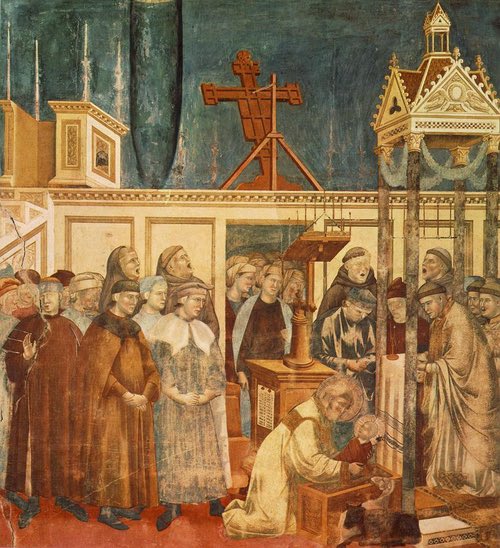
This year, it is 800 years since St Francis of Assisi set up a live Nativity scene in a cave in the Italian village of Greccio. There were live animals and a hay-filled manger to help people bring to mind the events described in the Gospels.
Homes, churches, shops, and many other places have, since then, set up Nativity scenes (manger scenes, cribs) as part of our lead-up to Christmas and the days following Christmas Day.
I still have the Nativity Scene that was my family’s in my childhood – it has been through a lot, including some significant damage in the Christchurch quakes. Cribs, like mine, pass on family memories and become an annual ritual – part of the spiral of liturgy, the cycle going around and around, and yet each year is different, as we age and change, some have died, and others are added to the family. The passed-down family Nativity Scene embodies continuity and change.
For this centenary of St Francis’ Nativity Scene, the Vatican compiled texts by Pope Francis about Nativity scenes with a special introduction written by the Pope [remember that the Pope chose to take the name “Francis” after the Assisi saint]. “Awe and wonder are the two feelings that move everyone, young and old, before the Nativity scene, which is like a living Gospel overflowing from the pages of Holy Scripture,” wrote Pope Francis. More quotes here. And further reflections by Pope Francis on Nativity Scenes here.
Nativity Scenes sit within the tradition of imagining oneself into the Biblical stories – much in the manner strengthened by Ignatius Loyola. We are present, through our imagination, at the birth. The historical details, although important in other ways of reflection, fall away in this form of prayerful imagining: it doesn’t really matter what number of Wise Men there are, or that they are present in the same imagined scene as the shepherds (when they are actually found in different gospels, and for different reasons!).
The Reformation destruction of statues and images (and any contemporary denigration of them) loses justification if a Nativity scene is appreciated (or a Nativity play is cherished)…
The plethora of Nativity Scenes is also worthy of reflection – every race and culture represents the Incarnation, God-made-flesh into their own image and likeness. Many people respond to diversity and difference with fear and even violence; here is a reminder that diversity and difference is sourced in God and all can lead to God (another Ignatian teaching).
Again, in a different context, it is worth exploring the original context of Jesus of Nazareth (anyone who follows this site or knows me well knows how I relish this) but this highlights the importance of inculturation. Coincidentally, we began Advent on the Commemoration of Francis Xavier – his evangelism in Japan can be seen as launching inculturation: this other Francis learned the languages and adopted the indigenous dress of the peoples he served; Francis understood God was already present in every place and culture. Francis Xavier’s experience also highlights limitations. He used the Japanese word “Dainichi” for “God” – the term for the god worshipped by Shingon Buddhists. But then he discovered that this referred to matter without form. Japanese went from there through “Deus” to “Tenshu” to “Deusu” to “Gotto” to “Kami”! Maybe we, too, need to take care with how we refer to the one we call “God”…
Do follow:
The Liturgy Facebook Page
The Liturgy Twitter Profile
The Liturgy Instagram
and/or sign up to a not-too-often email


